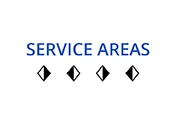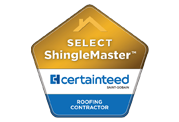Understanding Your Roof: A Homeowner’s Complete Guide
Your roof is more than just shingles—it’s a complex system that protects your home, boosts curb appeal, and impacts energy efficiency. At Style Roofing, Northern Virginia’s top-rated roofing specialists, we believe every homeowner should fully understand their roof’s components. Here’s an in-depth guide to help you know your roof inside and out.
1. Roof Structure: Rafters & Trusses
-
Rafters: These are sloped wooden or engineered beams that form the backbone of your roof. They support the decking and roofing materials.
-
Trusses: Pre-fabricated triangular assemblies offer structural strength and efficiency over rafters.
These critical elements define your roof’s pitch, shape, and load-bearing capabilities—essential for both design and integrity.
2. Roof Decking (Sheathing)
The decking or sheathing—typically plywood or oriented strand board (OSB)—is mounted to rafters or trusses. It forms a continuous base for underlayment and shingles. A stable, undamaged deck is vital—compromises here can lead to leaks and structural decay.
3. Underlayment: Your Backup Protection
Laying on top of the decking, the underlayment provides a secondary waterproofing layer. Options include:
-
Felt paper
-
Synthetic membranes
-
Ice & water shields for vulnerable areas like eaves and valleys.
This layer prevents moisture damage under the shingles, especially during extreme weather.
4. Roof Covering Materials
The outermost shield—roof coverings—comes in several durable and stylish options:
-
Asphalt shingles: Cost-effective and long-lasting (20–30+ years).
-
Metal roofing: Durable, energy-efficient, recyclable (lifespan 30–50+ years).
-
Wood shingles/shakes, slate, clay, composite tiles: Premium options with unique aesthetics and distinct longevity.
Style Roofing usually recommends materials that match Northern VA weather, budget, and architectural style.
5. Flashing: Waterproofing Critical Areas
Flashing—made of metal or flexible membranes—diverts water away from seams and penetrations. Key types include:
-
Valley flashing (where two slopes meet)
-
Step flashing (where the roof meets vertical surfaces)
-
Chimney flashing
-
Drip edge, to guide water off the deck and into gutters.
Proper flashing installation is vital to prevent leaks at roof intersections.
6. Roof Edges & Overhangs
-
Eaves: Overhangs at the roof’s edge that protect walls and allow for ventilation.
-
Gables: Triangular wall sections under sloped roof ends that add visual character.
-
Fascia & Soffit: Fascia caps the roof edge; soffit conceals the eaves and can contain vents.
-
Drip edges: Direct runoff into gutters, preventing decks & fascia from rotting.
7. Ventilation: Balancing Your Attic Environment
Well-balanced ventilation helps prevent:
-
Heat buildup (hurting shingles and raising cooling costs)
-
Moisture and mold growth
-
Ice dams during winter
Key systems include ridge vents (peak), soffit vents (eaves), and gable vents. Style Roofing ensures airflow is optimized for local weather.
8. Valleys, Ridges & Hip Areas
-
Ridge: The top horizontal seam; covered with ridge cap shingles or vented ridge systems.
-
Hip: External corner intersections—use specially cut shingles.
-
Valley: Internal seams vulnerable to leaks; require durable flashing and careful installation.
9. Gutters, Downspouts & Leader Heads
-
Gutters collect runoff at eaves;
-
Downspouts direct it away from your foundation;
-
Leader heads (funnel-like in gutter systems) accelerate flow and reduce overflow risk.
Preventing water pooling near your foundation protects landscaping and basement integrity.
10. Optional Features You May Encounter
-
Skylights & roof windows: Require custom flashing and waterproofing.
-
Chimney caps & flashing: Protect vintage masonry elements.
-
Solar shingles, living (green) roofs, and solar panel mounts: Specialized additions requiring tailored structural support and water resistance.
Why Style Roofing Is Northern VA’s Premier Roofer
-
Local Expertise – We understand Northern Virginia’s diverse weather and building styles.
-
Certified Craftsmanship – Our team holds top manufacturer certifications and follows industry best practices.
-
Comprehensive Solutions – From inspection to installation to maintenance—we handle every roof layer professionally.
-
Transparent Communication – We guide you through roofing terms and materials—empowering smarter decisions.
-
Durability and Design – We match the right material to your home’s architecture and your long-term goals.
Tricks to Extend Your Roof’s Life
-
Conduct bi-annual inspections (spring and fall).
-
Keep gutters clean to prevent damage and ice dams.
-
Replace damaged flashing or shingles before they escalate.
-
Maintain attic ventilation to control heat and moisture.
Regular maintenance can delay a full replacement by several years—and [Your Company Name] offers affordable repair plans to support that.
Ready to Talk About Your Roof?
Whether you’re inspecting your current roof or planning a full replacement, knowing its parts helps you make informed choices. At Style Roofing, we’ve installed thousands of roofs across Northern Virginia—using quality materials, respectful service, and expert installation.
Call us today for a free roofing inspection and make sure your roof is protecting your home like it’s supposed to.











